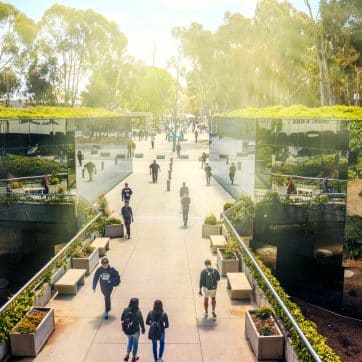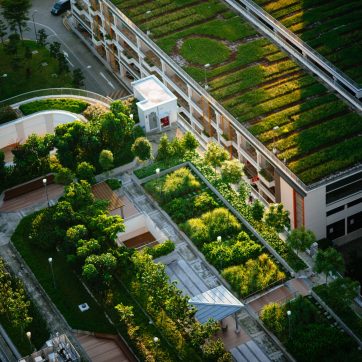
Transforming the places we live and work
Our vision demands a profound shift in mindsets and unprecedented collective action. We need to change our human design for life. We need to transform places and industries so that people can see and aspire to a sustainable future. We need collective ingenuity and innovation that turns the unlikely into the possible. We need systems change.
We believe that large-scale, place-based demonstrations of sustainable, regenerative living can do this.
Conducted in partnership with cities and regional governments, institutional stakeholders, industry and local communities, our work focuses on place-based transformation through systems innovation designed to enable learning and mindset shift. We launched Deep Demonstrations in 2019 as test beds for ambitious climate action. Today, they form the heart of our strategy.

A holistic systems change methodology
Our portfolio approach shifts attention from the merits of individual projects to the potential for integration: facilitating synergies across and between projects to effect systemic change. The methodology begins with an intention to transform a whole place, or create an ecosystem of solutions.
Our methodology supports decision makers and innovators to plan, map, analyse, engage, design, test and invest in a portfolio of solutions in cities, bioregions and value chains. Deeply rooted in the communities they serve and learn from, the place-based transformations show how the interrelated actions of systemic change can benefit all.
Place-based transformations in progress
Systems change is possible. Through accelerating learning, connecting efforts across siloes and sectors, and addressing complex intersectional challenges, we are leveraging and connecting multiple places and value chains across Europe and beyond.
See what we are working on and how you can join.
Transition to a circular, regenerative and low-carbon economy
Read moreOur mandate across Europe
We lead consortia of partners across Europe to deliver on breakthrough climate goals by 2030.
Pathways2Resilience launches to accelerate climate adaptation in European regions.
Learn moreEuropean Cities accelerating towards climate neutrality by 2030.
Learn moreClieNFarms is an Innovation Action project funded by the European Commission to support the European Green Deal.
Learn moreThe mission to establish 100 living labs and lighthouses to lead the transition towards healthy soils by 2030.
Learn moreBuilding a sustainable, inclusive, and aesthetically pleasing Europe.
Learn moreEurope's eyes on Earth, to better understand our planet and sustainably manage the environment we live in.
Learn moreHow we got here
Everything that we do today is tied to our past projects and is built on a decade of working in climate innovation across industry, land-use and finance. They gave us unparalleled insights into the innovation landscape and the unmistakeable need for systems change across Europe and beyond.
Here is what we learned.
For two years, EIT Climate-KIC and the city of Leuven worked with the residents to shape the future of Kessel-Lo, transforming it into a more pleasant and sustainable place in which to live, meet and move around.
Read case studyThe common goal of EIT Climate-KIC and the city of Krakow was to expand the city’s existing initiatives, link them together and fill strategic gaps to build a portfolio of experiments, starting with a series of meetings and workshops on systems thinking, policy innovation and more.
Read case studyRybnik is situated in the heart of Silesia, the largest coal-producing region in the EU, and faces the joint challenges of energy transition and enormous air pollution. The municipality co-designed with EIT Climate-KIC and partners the plans to accelerate the city’s transformation towards climate neutrality.
Read case studyThis cross-KIC initiative worked on bringing data into the Spanish capital’s decarbonisation activities. The programme helped a cohort of cities across Europe, including Madrid, accelerate their transitions towards carbon neutrality and climate resilience.
Read case study
